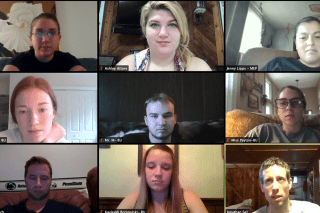MEP practicum opens virtual doors to online teaching
Bloomsburg
Posted

A few added lessons came with this summer’s Migrant Education Program practicum for a group of Bloomsburg University education majors eager for classroom experience prior to their student teaching placements.
The four-week traditional summer program — entering its 23rd year in Hazelton and fourth year in Harrisburg — designed for children in kindergarten through 11th grade whose parents are migrant workers shifted to online due to the COVID-19 pandemic. As a result, the future teachers were tasked to lead lessons not in front of a classroom but to teach virtually through Zoom and using various online education tools.
“I was drawn to this practicum, because I really wanted to learn how to better teach ELLs (English language learners) students and loved how the practicum was organized,” says Ashley Attore, a middle level education major. “Having this practicum online taught me how to use online tools and to create an engaging lesson and activities online. It’s more work to create online lessons making sure students are able to access the materials and to also make sure students are engaged.”
Attore says she learned to specifically work with Zoom, Padlet, and Google Suite.
“A huge part of having student participation was to do breakout rooms to better build rapport with students,” Attore says. “When I asked students about their summer and interests, they’d turn their cameras on and be excited to tell me how their summer and their hobbies. The students taught me as much as I taught them. “
Justin Petrovich, a middle level education major, was also drawn to the MEP practicum for the opportunity to work with ELLs students. He too saw the practicum’s pivot to online learning as a potential added benefit.
“This experience helped me an enormous amount for my student teaching placement,” Petrovich says. “During the planning and preparation phase of the practicum, we had extensive training on Padlet, Google Suite, Flipgrid, Zoom, and many other online tools to aid the students. This training helped me in my (current) student teaching experience to the point where if asked, I’m able to lead and help instruction for other educators who may need help with online tools.”
According to Petrovich, one of his favorite activities was the regular Friday Zoom work sessions. It was another level of teacher preparation, he says.
“Practicum students, aides, and teachers alike from all grade levels gathered on a single Zoom conference and spoke with each other on how we can do next week’s lessons, as well as the positives and negatives we experienced during the week,” Petrovich says. “It was a very peaceful and friendly environment that also helped build a rapport with those who may not be familiar with each other.”
Petrovich says the practicum not only fully prepared him to student teach — giving him a valued flexibility to confidently teach in-person or online — as well as be at the head of his own classroom in the near future.
“I believe to improve as an educator you must experience what it’s like to educate every type of student in different learning environments,” Petrovich says. “The students were amazing. No matter the language barrier every class we had, the students worked hard, communicated, and created new learning experiences. The students wanted to learn, and they really showed it.”
Attore agrees working with the students was the best part of the experience.
“I grew as a person during this practicum, and I was so excited to see the students,” Attore says. “I was sad when it was over. With being online we made the best out of the experience.”



